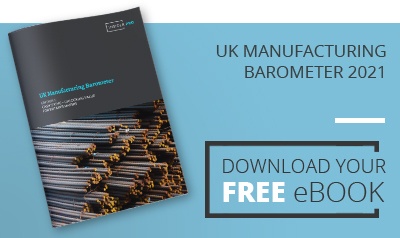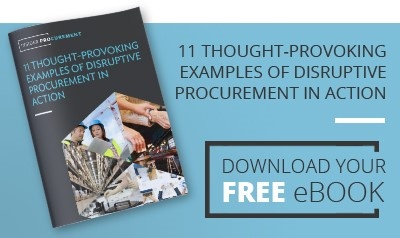"Best practice" is a phrase that can be over-used, but nonetheless sought-after by all concerned. We like to talk about "Next practice" as a way of bringing about improvements as well as change. This list combines suggestions from the top industry gurus - including our modest selves!
1 Apply cross-function knowledge
In their report "How to become a procurement champion", AT Kearney suggests that procurement leaders need to be expert in Procurement, R&D, Production and Finance.
The reason is obvious - taking cost out of the business isn't always about reducing the price. If you tender for the same item for long enough you will eventually reach a price plateau that is hard to go below without some clever thinking. That's where knowledge of production processes, the latest technological innovations and learning from other industries comes into play.
2 Optimise supply chain communications
Procurement should work closely with logistics, supply chain managers, contract managers and other staff - both inside the business and out in the supply chain - to ensure open, timely communications.
Businesses fail to deliver on the promise of a well-negotiated contract simply through a lack of communication.
We see this a lot with rebate deals. Procurement negotiates great terms, but if the systems and processes don't provide full visibility of those terms when purchasing more stock, rebate thresholds can be missed. The end result is a higher item cost than was envisaged.
The answer is to ensure that all parties are aware of the mechanics of all agreements, in order to operate them to their full potential.
3 Make alliances with strategic suppliers
This is much more than supplier relationship management.
Best-in-class procurement teams strive to be the customer that their suppliers turn to with their best ideas.
They have the inside track on their suppliers and their suppliers' industry and, as a result, obtain advanced knowledge of new innovations coming to market.
These alliances, together with points 1 and 2 above put businesses with best-in-class procurement teams ahead of their competitors. They are the ones who are already prepared to take advantage of new innovations whilst their competitors are figuring out the best way forward.
4 Collaborate with other departments
Best practice procurement teams work with their colleagues in other departments to make strategic sourcing decisions.
The person responsible for buying workwear asks employees for their opinions.
The person sourcing ingredients for food production collaborates with goods-in, logistics, operations, production, food technologists, and others to determine standards and volumes not only for that ingredient but also the way it is packaged, shipped, and stored - all of which impact the cost.
5 Focus on Total Cost of Ownership, not just Price
We alluded to this in point 4 above. The price of an ingredient from supplier X may be the lowest you can possibly get, but if it requires more man-handling or storage than more "expensive" alternatives, it may not prove to be the low-cost solution you need.
Best-in-class procurement teams really focus on that total cost of ownership - taking account of storage, handling, and other costs. They work with their colleagues in other departments to truly understand the parameters and how to arrive at economic order quantities EOQ to take account of stock-holding and other costs.
6 Leverage Technology
Procurement needs solid information on which to base decisions and start supplier negotiations - information about supplier performance, item usage, forecasted needs, waste percentages, production problems, sales and more.
Likewise, when their colleagues in production, sales and logistics place orders on suppliers they need access to contractual information to calculate optimal order quantities and obtain the best discounts and rebates available.
Of course, technology has a place for those who are required to go out to tender - placing an electronic barrier between suppliers and the procurement team until the right time helps to make the tender process more efficient.
There is no single solution here, but best-in-class procurement teams often supplement their core ERP systems with applications and analytics tools to meet their needs.
According to Aberdeen Group, "Best-in-class companies have more than 75% of their contracts available in a searchable repository", and (probably as a result) are "3 times more likely to have transactions compliant against contracts than anyone else".
7 Renegotiate regularly
Best practice procurement doesn't "let things slip through the net". Those procurement leaders are constantly monitoring contract performance and changes in the world around them to spot opportunities to renegotiate. Some examples of indicators that a contract should be reviewed and renegotiated include:
- a potential replacement becomes available
- requirements exceed/fall below the original forecast
- production or logistics issues arise
- competitors bring out a new design
- innovation in your industry
- innovation in your suppliers' industry
According to Aberdeen, best-in-class companies renew 56% of their contracts annually whereas others generally renew only half that number.
8 Minimise Risk
Depending on the business, profit margin and risk are two of the biggest items on any CEO's radar. Traditionally, buyers were focused very much on driving costs down to improve profit margins, but increasingly businesses are forced to consider the risks involved in every decision.
Legislation around compliance, bribery, traceability, health & safety, and slavery; green issues and social responsibility are all factors that impact the boardroom and below.
Supply chain risks, delivery reliability and logistics issues all create a level of risk to the business.
Procurement teams have to equip themselves with knowledge of all these elements and manage them in order to reduce business risk.
Having read this far, you will understand a little of the way that we here at Insider Procurement think. We care passionately about performing best practice procurement in all of the ways outlined above AND at the same time we find creative, exciting, innovative ways to reduce total cost of ownership and risk.
To read more about how our procurement consultancy works, download our eBook "11 Thought-provoking Examples of Disruptive Procurement in Action", or read more on our website.


